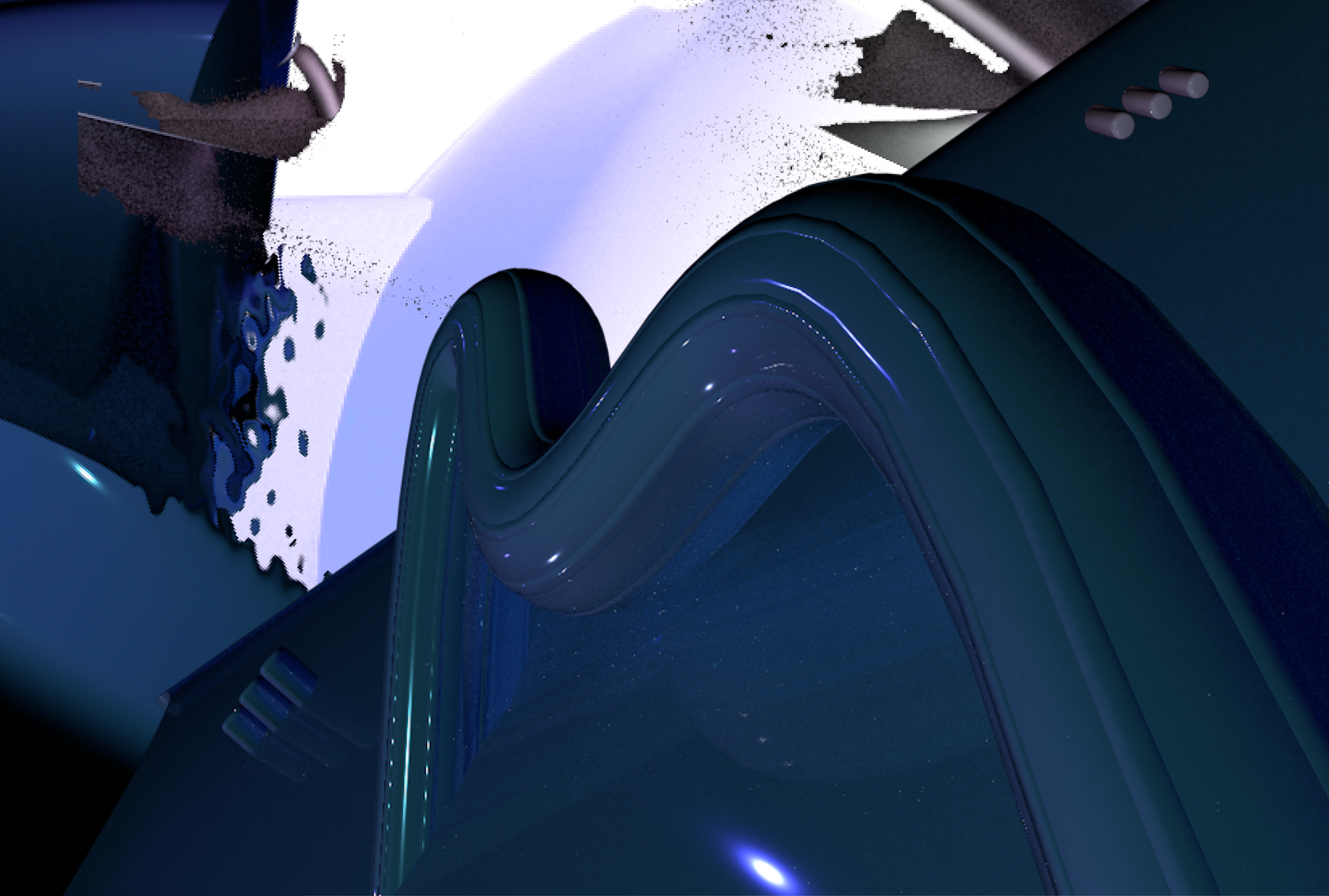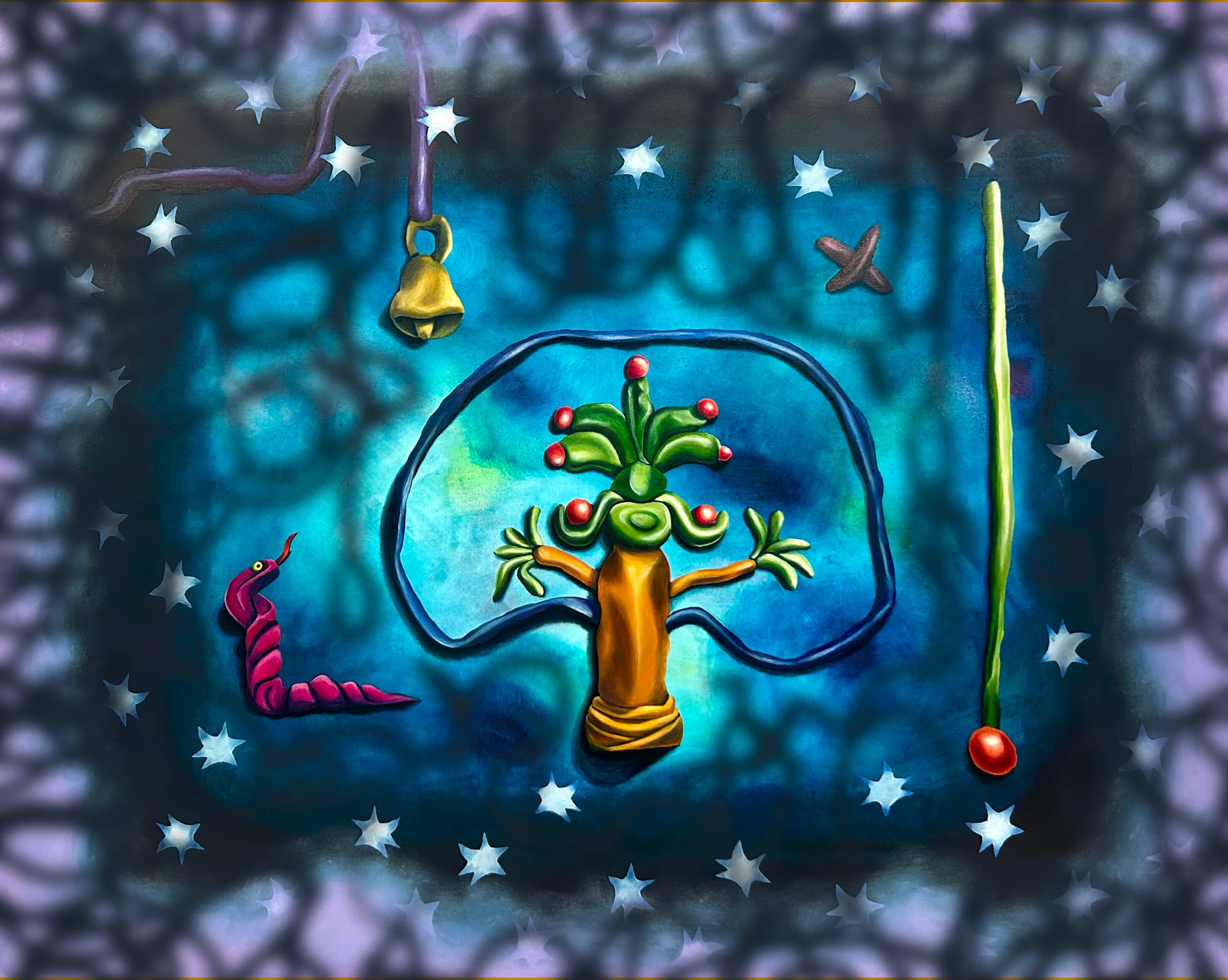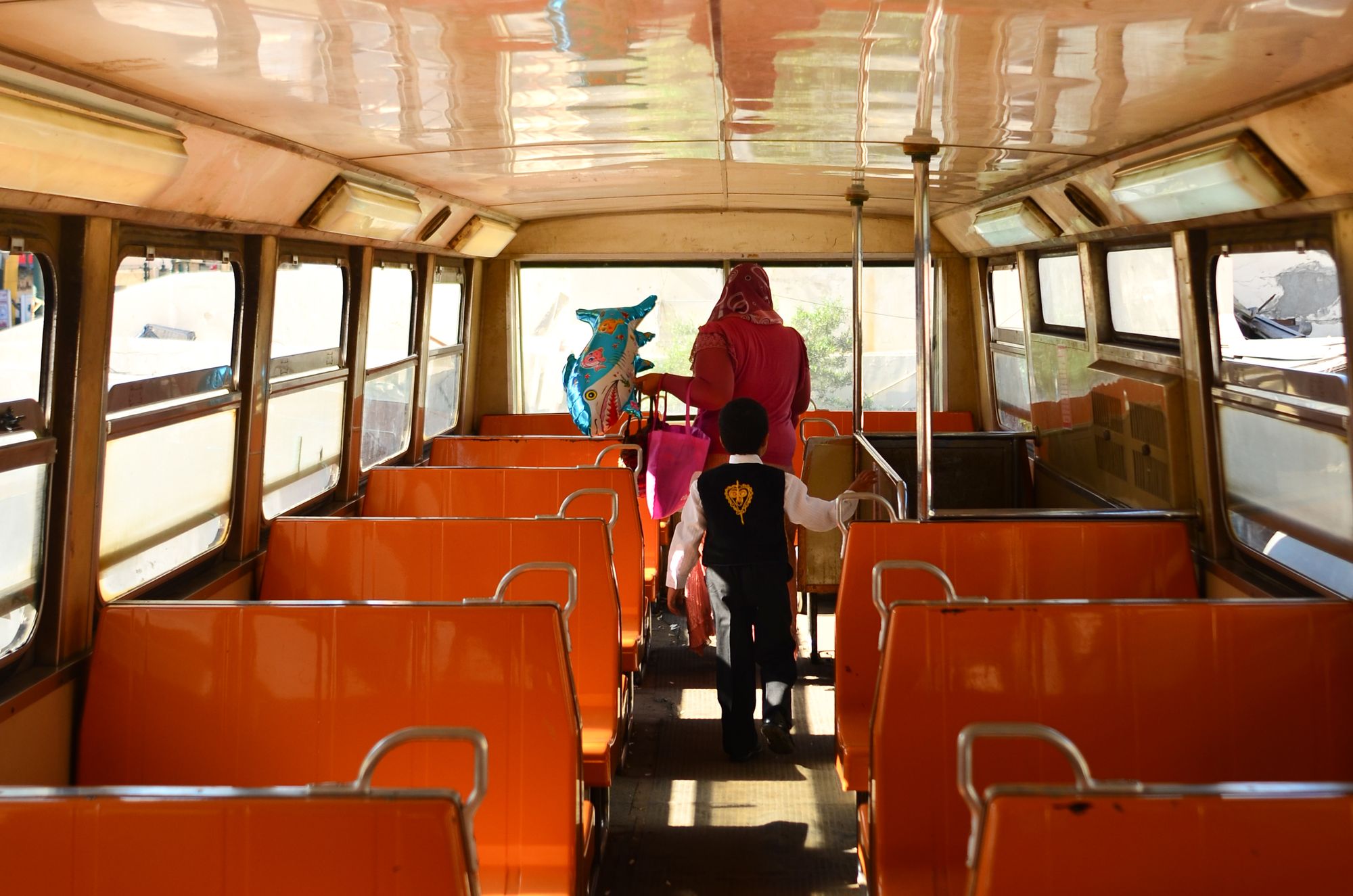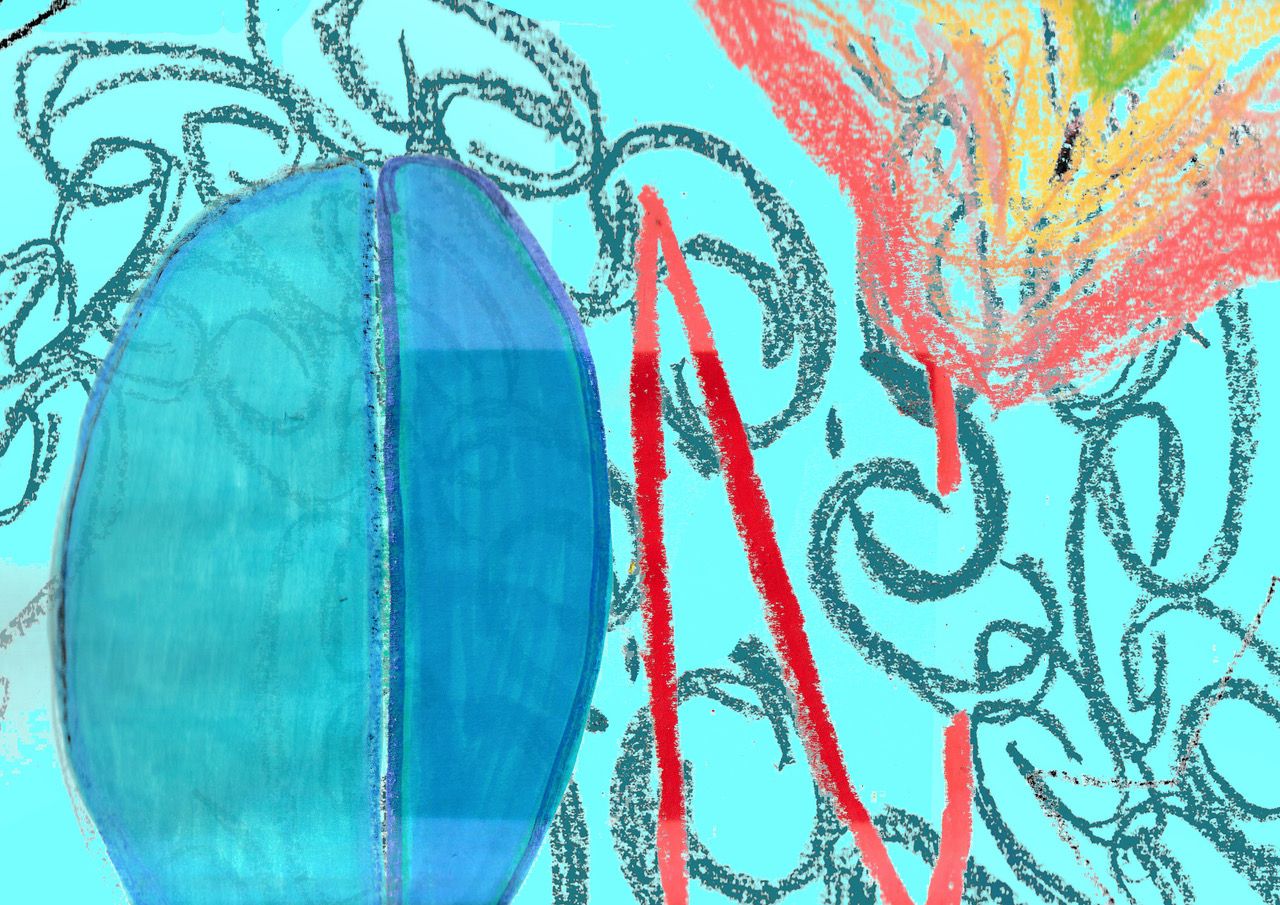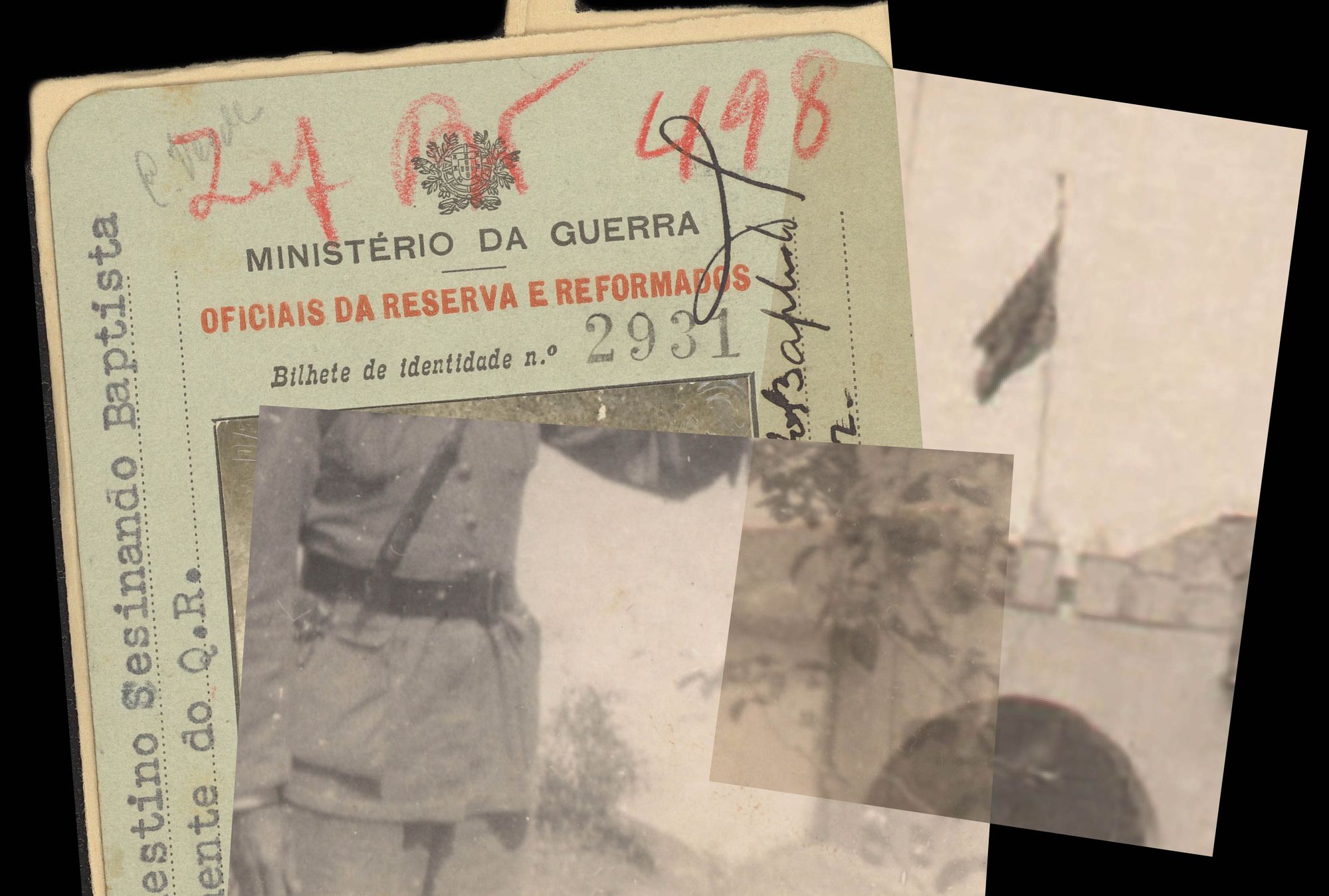
Its presence bears witness to decades of time. Perched on a wall of my father’s home in faded sepia, the photo depicts a group of about 40 men, amongst them my paternal great-grandfather—a man we, in my family, were taught to admire, and whose life would later become the source of my obsession. To the average viewer, nothing is particularly striking about this picture. But to me, a few details made this photo the source of a growing discomfort that lingered for years until it finally sent me on a journey into the past.
At the top of the passe-partout, bold letters state: “Portuguese Colony of Leopoldville, Belgian Congo.” At the bottom, next to the stamp of the studio in Luanda, Angola, where the photo was developed, is the number 7-4-912— 71 years before I was born. In the photo, amongst a flock of Panama hats are two Pith helmets, also known as Safari helmets—the garment forever imprinted in popular imagination as a symbol of European colonial domination, particularly on the African continent.
As a child, I would fall asleep looking at the photo whenever I spent the weekends at my dad’s house. My fingers would copy the typeface at the top, drawing it in space, in a loop that would quickly send me to sleep. The photo would come up, again and again, when I’d ask my father about his grandfather, Celestino Sezinando Baptista, the sole origin of my family’s short-lived wealth. The photo was taken on what we believe to be Celestino’s first trip to Africa, when he was around 20 years old, working for a trading company. Later, he became a lieutenant in the army, and joined several settler and administrative missions in various Portuguese colonies in Africa. His “adventurous personality” and “curious mind” led him on journeys that would later be praised by generations in the family, even if we knew little about the violence those entailed.
Diving into the origins of this picture became a way to reckon with my family’s own history. Next to it, several other items in my family’s heirloom have helped me fill in the gaps. Their stories have taken me on a ride through Portuguese colonial history in Africa, revealing plausible narratives that were radically different from the mainstream stories I grew up hearing. To this degree, they are portals that open up the possibility of reckoning with our colonial past.
Leopards and lizards
Influenced by the trends set by the birth of Portuguese anthropology, Celestino was an eager collector, gathering all sorts of things from the remote parts of Africa. Unlike the valuable china, silverware, oil paintings, and rare coin collections that were aggressively disputed by his six children, most of these objects had little market value, and were left behind when the family assets were divided after his death. Many of them were rescued by my grandmother, Celestino’s daughter, and later populated the cabinets and walls of her house, where I spent a considerable amount of my time as a kid.
My grandmother’s corner couch in light corduroy fabric was the softest place to jump around, probably because it was completely covered in all sorts of furs and leathers. On the wall above it was a series of long snake and viper skins, which felt rough against my tiny fingers. Higher above were skulls of antelopes and other animals unknown to me, exhibited like taxidermied hunt prizes. There was a tortoise’s shell, a tiger’s skull, and an array of profusely decorated musical instruments deemed “primitive.”

Each of these things revealed a different chapter of my great-grandfather’s history. But they also connected my grandmother to Africa, where she was born and lived much of her early life. Every object had a story; everything we laid eyes on—even if no one ever said it—felt extraordinary. We had pillow fights with cheetah skins, and played with exquisitely carved handcrafted guitars. “And so did other Portuguese kids,” we thought, surreptitiously feeding the illusion that the old world was at easy reach.
Paper clipping
When I use “we” or “us” addressing these memories, I refer to me, my siblings, and our cousins, the third generation of our family born after the 1980s. We didn’t get to meet our great-grandpa who passed away two years before I was born. But like the rest of our family, I grew up with the aura of his echo. The details of his life abroad were blurry, and in these vague but positive memories, there was never a mention of what Celestino actually did in Africa. We would only hear of the “exotic” details, the epic episodes, the dangerous moments—always from a detached, removed perspective. The “other” in those stories was always implicit but never mentioned. Celestino was in the “wild,” providing for his family back in Portugal, and words like colonialism, violence, racism or exploitation were never part of the story.
“The ‘other’ in those stories was always implicit but never mentioned. [...] Words like colonialism, violence, racism or exploitation were never part of the story.”
Then, one day, in a paper clipping from a local archive, I read that Celestino once worked as the field aid of Norton de Matos, a controversial Portuguese general responsible for implementing the highly discriminatory “Indigenous Statutes” (o Estatuto do Indigena), an apartheid system which outlined the religious, cultural, social and labor duties of the indigenous African people living under the Portuguese rule. Apparently, my great-grandpa and Norton de Matos once contained an uprising in the South of Angola. I can’t find any date or reference to this event. How much physical violence does it take to contain a revolt of people legitimately fighting for sovereignty? Did my great-grandfather know?

The glass slide
I must have been 13 or 14 when my father and I were going through some old boxes, and he came across an old metal box. After carefully opening it, he held in his hands something I had never seen before: a delicate photo slide made of glass. “Something very old,” he explained, “from before film cameras existed.” What he wanted to show me though, was what the image depicted: a vulnerably exposed intersexed Black naked body. Beyond the curiosity of never having seen a figure with both male and female characteristics, there was an overwhelming discomfort I could only name decades later. Not because of the crude sight of genitalia, but of recognizing the violence of my own white gaze. The brutality in the forced exposure and the denial of dignity was something I had only seen in racist imagery—never in my family’s house. My great-grandfather was born in 1892, 131 years after the slave trade was abolished in mainland Portugal, and 14 years after it became prohibited in all Portuguese colonies. Nevertheless, forced labor persisted in the remote regions of the former colonies for another century until at least the 1960s. Was the person depicted in that glass photo slide free? Was my great-grandfather responsible for that mise en scène? Did he take the photo himself?
A lock of hair
While clearing out my great-grandfather’s house after he passed away, at the bottom of an old travel chest he used in his trips, my mom found an envelope with a handwritten letter he’d left for his wife before departing on a mission, stating that he’d left enough money to keep the family afloat for six months, “shall he not return.” My great-grandmother never touched it, superstitiously fearing it would precipitate my great-grandfather’s death. My grandmother also kept an envelope with a lock of hair “from our beloved son Eduardinho”—Celestino’s toddler lost to a tropical disease in Africa.
What type of person was Celestino Sezinando Baptista? Accounts of his life are conflicting. According to my mother, her grandfather, my other great-grandfather, profoundly disliked him. As a young cadet doing compulsory military service, he found himself working for him. He would recount how once, Lieutenant Celestino got upset at a dog that was persistently barking, drew his gun, and shot the animal in cold blood. My father later shared another disturbing anecdote: my great-grandfather was once placed in Cape Verde on a mission in close distance to Tarrafal, commonly known as the “Camp of Slow Death,” a name that under no circumstances you’d like connected to your past. What exactly happened there? What secrets are buried in this unsettling chapter of history?
Tarrafal
Built in Cape Verde by Portuguese dictator António de Oliveira Salazar in 1936, Tarrafal was a concentration camp. When it opened, 152 political prisoners were sent there, and until 1954, the prison detained those who opposed and fought the regime. In 1962, it reopened under a different name, “Chão Bom Labour Camp,” and was used to imprison the many anti-colonialist and resistance fighters who struggled for the independence of Angola, Guiné-Bissau, and Cape Verde. I knew that it was the most violent prison of the Estado Novo, the authoritarian regime that ruled Portugal between 1933–1974. But in my ignorance, and like so many others in the following generations, I wasn’t fully aware of how truly awful it was.
Conditions in Tarrafal were barbaric. Soon after being admitted, prisoners’ health would start deteriorating, and many died due to isolation, beating, torture, and heavy work under a punishing climate. By far, the worst of it was what became known as the “frying pan”: a punishment cell where they were forced to endure isolation and extreme dehydration for extended periods. Historical accounts from political prisoners who survived the camp recount being fed crow meat, and describe the lack of protection against mosquitoes carrying deadly diseases as yet another way of killing prisoners. Death was omnipresent.
Although the fact is highly disputed within my family, according to my father, my great-grandfather was allegedly stationed at Tarrafal for a while, working in connection with the camp’s administration. As he tells me this information, my dad’s voice weakens, and tears start to roll down his face as he repeats a story once told by his grandfather: the official orders were to starve the “difficult” prisoners by only giving them bread and water, and they were not to receive both each day. “My grandfather would give them water one day, and bread the next day, so they would have something in their stomach every day,” my dad tells me, crying. I wanted to hug him, but I didn’t. For the first time, even if only silently, we were able to name things and acknowledge the violence of the past.
Bakonga
I once asked my father about another object, known in my family as “the Belgian Belt,” a souvenir from the times my great-grandfather spent in Congo while it was still under Belgian occupation. My father brings it down from the top of a dusty wardrobe, and as we clean the dust, I notice that the colored pompom I remember from my early teens has since faded. But as it turns out, the Belgian Belt is neither Belgian nor a belt, it’s actually a Bakonga—a woven buttock shield that women of the Mongo people wore around their waists. It dates back to the early 20th century, and according to a London antiques dealer, a similar item sells for £1,450.
The belt and the group photo are still part of an enigma I haven’t been able to solve: where was the Portuguese settlement of Leopoldsville whose foundation is depicted in the 1912 group photo? Nowhere could I find a reference. This place seems to have been erased from history books, national archives, the Internet, and my family’s memory. The story this photo tells is one of possibility and likelihood—but never fact. The only surety is that I may never know the whole story.
“Each of these objects is a portal to our past, a possible connection to our history, our silenced memories. The problem is that most of those memories are incomplete, distorted, contradictory.”
Sitting with this photo and objects I’ve been clinging to and painstakingly collecting for the past few months, I try to establish a loose timeline. Each of them places this man somewhere far away, in a scenario of violence and exploitation. Each of these objects is a portal to our past, a possible connection to our history, our silenced memories. The problem is that most of those memories are incomplete, distorted, contradictory. They are blank. They’re hard, if not impossible, to recover. And it’s no accident. The absence of memory is so by design.
Designing blank memory
I come back to this text over and over again. Different months, different seasons, different times of the day. Today is June 10th, or “Portugal Day,” a national holiday that commemorates the death of Luís de Camões, the Portuguese Homero. During the dictatorship and up until the 1974 revolution, the date was celebrated as “The Day of the Race.” Here, “race” refers to the white Portuguese, but the date more recently became unofficially dubbed Alcindo Monteiro’s Day, a homage to the 27-year-old Black Portuguese man brutally murdered by skinheads on June 10, 1995. Decades later, one of those skinheads still repeatedly appears on Portuguese TV, either depicted as a loving father speaking of the miracle of life and paternity, or invited to a popular morning show to voice his political ideas on why Portugal needs a new dictator.
“The eradication of Portuguese colonial history from public space has been a nationwide project [...] This process translates, in the present, to a blank memory and a lack of public knowledge of what Portuguese coloniality truly entailed.”
The eradication of Portuguese colonial history from public space has been a nationwide project carried out first by Salazar’s dictatorial regime and then by the successive powers in place, the media included. This process translates, in the present, to a blank memory and a lack of public knowledge of what Portuguese coloniality truly entailed. I grew up hearing variations of sayings like: “Portugal was the good colonizer” or “Portugal is not a racist country.” Meanwhile, schoolbooks taught generations of Portuguese that “slaves,” coffee and sugar were the most profitable colonial exports in a time when “Portugal was the biggest colonial power in the world.” Our national anthem still praises the heroes who conquered the oceans, without ever questioning what this supposed bravure and fearfulness did to others, while right-wing nationalists and authoritarians are given prime-time media coverage.
The 1974 revolution forcibly ended the dictatorship in the so-called “metropolis” and gave final independence to the territories that were still fighting to be free from colonial rule. This twofold event marked a change of direction in the country’s course. But shortly after, Portugal’s new democratic regime took a U-turn, folding inwards, away from the expansionist legacy of the previous 500 years. The newly elected government focused on rebuilding the country, elevating its population out of extreme poverty and laying out the foundations for one of the youngest democracies in Europe. Meanwhile, social issues directly resulting from the liberation wars in Africa went largely ignored. There was no collective grieving for the generation of young men lost to the conflicts, nor was there any support for the severe trauma suffered by those who survived the violence. There was no effective strategy to integrate the white Portuguese settlers who returned to the mainland, nor the Black Portuguese who came to Portugal for the first time. More problematically, there were no reparations to any of the former Portuguese colonies in Africa. In fact, like many other European colonizing powers, Portugal chose to pay reparations to the slave owners who profited from the exploitation in the first place. Those issues that we didn’t yet know how to process were simply pushed to the background for generations to come.
“Out of shame, pain, or trauma, the [Portuguese] country chose to forget.”
Out of shame, pain, or trauma, the country chose to forget. Through the construction of history, the exclusion of Black voices and of those who were lured into fighting the colonial wars a planned effort was carried out collectively. Social scientist Bruno Sena Martins describes this as “embargoed memories”—memories originating in the colonized territories which the hegemonic North determined long ago as territories of non-memory. It’s not difficult to whitewash and romanticize the past when there’s a memory void between the now and then. This social and political silencing, in fact, fostered what Portuguese historian Fernando Rosas calls a place of “un-memory,” a prosthetic memory that stands for what should be there. That void, for so long left unattended, is now quickly being filled with a crescent nationalist sentiment that covertly supports racist and neo-colonialist views of the world. Despite multiple recommendations from institutions such as the UN or the Council of Europe, the country still refuses to confront its violent colonial past. Public monuments countrywide glorify the missionaries and navigators of “age of dicoveries” while school books trivialise the violence of slavery and colonialism. In this collective amnesia the far-right finds its perfect breeding ground to mold, architect and glorify its colonial history. Only last year, a national plan for fighting racism and discrimination was put forward as a public policy, but its implementation is yet to be seen.
Records and possessions, memory and remembrance
The copy of my great-grandfather’s military records finally arrives, painstakingly tracking every single one of his moves and depositions since joining the military in 1917. In the pages populated by all sorts of tedious details, I find the names of my grandmother and my uncles, and the locations I repeatedly visited in my imagination as a child. Using Google Maps, I travel to some of the sites where my great-grandfather was once stationed as a member of the occupying military force. I learn about events that I was never told about, and occurrences that were kept secret from my family. Some of my family’s vague stories and anecdotes can now be placed like a pin on a map. It makes it all more tangible: it happened; it is true.
Memory cannot be attached to things; it moves in-between things. Looking back, there was always a sense of “wrongness” in each of the objects in my family heirloom, an unspeakable weight in all the half-memories we were told. Growing up in the 1980s, my family, like many other white Portuguese settler colonial and military families, had already learnt their proud memories weren’t exactly honorable. However, we, the children, couldn’t ask questions. And when there isn’t space for questioning, you let the wound lay dormant within you, carrying it within yourself, in silence, and you pass it on from generation to generation. For me, this realization came only decades later.
“Like my family, many others have fetishised, romanticized or simply completely omitted all evidence of this past. Isn’t it only by reclaiming these memories that we can create the languages that will disarm racist and oppressive narratives?”
We, the offspring of colonialism, have no knowledge of our direct or indirect ties to the violent history of the Portuguese expansion overseas. No one seems to know who owned the plantations with enslaved people, or who profited from the human trafficking network that Portugal operated for approximately 450 years while it trafficked what is recently estimated at 5.8 million people from Africa. Weren’t these men someone else’s great-grandfathers? Like my family, many others have fetishised, romanticized or simply completely omitted all evidence of this past. Isn’t it only by reclaiming these memories that we can create the languages that will disarm racist and oppressive narratives?
Nevertheless, our reality is that we still live in a world where imagining racism as an “open wound” is a highly contentious issue, as recently came to the fore through the controversial selection for the Portuguese Pavillion at the 2022 Venice Biennale. Many believed Grada Kilomba’s loss was a result of a jury member who delegitimized her experience of racism. Grada Kilomba’s work clarifies and outlines this collective path to conscientialization. It starts with negation, the very place we as a country are at, followed by guilt, progressing to shame, recognition, and finally ending with reparation.
“We must ask every uncomfortable and divisive question, open every drawer, revisit every memory we can still access. [...] Only by doing this can we create new configurations of power and knowledge.”
Where am I in this spectrum? I’m not totally sure. I shift between guilt and recognition depending on the day, mood, and connectedness to reality around me. But I am clear that to continue forward, we must refuse to continue participating in the romanticizing of colonial history. We must ask every uncomfortable and divisive question, open every drawer, revisit every memory we can still access. There is much more to discover, to catalog, to confront, to doubt, to process, to come to terms with. As Grada states, only by doing this can we create new configurations of power and knowledge. This catharsis is part of our collective path to the future.
Eva Gonçalves (she/her) is a graphic designer, researcher and educator working in the overlapping spaces of design, politics, education and community. She works with clients in the cultural and political fields, with people, groups and institutions whose values she shares. She is a long time co-editor of Berlin-based interview magazine mono.kultur, teaches at the University of Fine Arts in Lisbon and runs side research projects—experiments with a strong community and collaborative focus that often tend to gravitate around education and knowledge as tools for connection and resistance. Since 2017 she has been running Ellipsis Open School, an experimental school that takes place in the broader context of a temporary community.
Title image: A collage of old documents and private photographs of Eva Gonçalves family.


